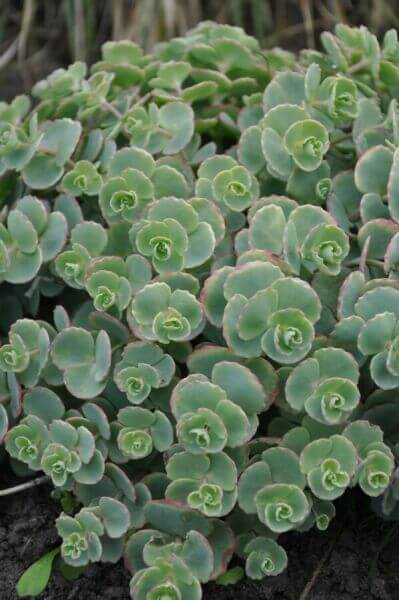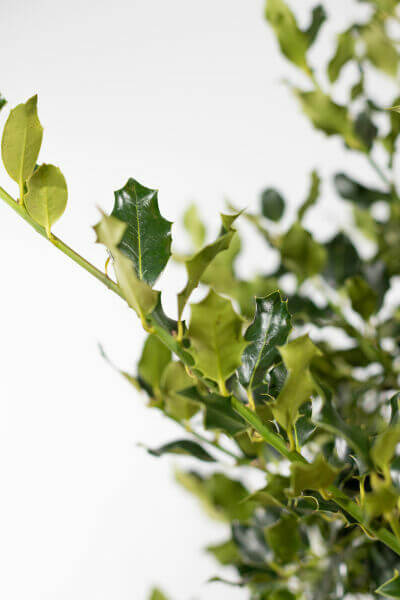Hedge Plants For Texture
Enhance your garden's allure with lush hedge ranges such as Yew (Taxus), Thuja, Laurel, Photinia, and Bamboo, celebrated for their structural stability and ecological benefits.
Yew and Thuja supply evergreen coverage and winter strength, while Laurel offers fast development and broad, fragrant leaves.
Photinia adds seasonal beauty with its vibrant red foliage, and Bamboo lends a low-maintenance, tranquil atmosphere.
These hedges improve air quality, minimize sound, and create tranquil, personal areas.
Proper planting, spacing, and maintenance guarantee energetic growth and environmental consistency.
Check out how these lavish varieties can elevate your garden's charm and wellness.
Key Takeaways
Change Your Garden With Lush Hedge Varieties
- Select Yew for its thick, evergreen development and unparalleled longevity.
- Choose Laurel for its quick development and broad leaves, ensuring quick privacy.
- Select Photinia for its dynamic seasonal foliage, which turns a striking dark red.
- Make use of Bamboo for a low-maintenance, winter-hardy hedge with visual appeal.
- Area plants 2-3 per meter and prune frequently for optimum development and health.
Popular Hedge Plants
When transforming a garden with lush hedge varieties, it's important to think about popular hedge plants such as Yew, Thuja, Laurel, and Photinia due to their unique characteristics and benefits.
Yew (Taxus) is highly esteemed for its longevity and dense, green growth, making it a prime choice for enduring landscapes.
Thuja is kept in mind for its evergreen foliage and robust winter durability.
Photinia adds seasonal vibrancy with red leaves that darken gradually, producing dynamic visual appeal.
Laurel provides rapid development and aromatic, broad leaves, suitable for quick personal privacy.
In Addition, Bamboo is an exceptional option for ambiance, providing a low-maintenance, winter-hardy option that enhances the garden's visual with its sophisticated, swaying walking sticks.
These selections cater to a range of horticultural needs and preferences.
Advantages of Garden Hedges
Garden hedges provide a wide variety of benefits, making them a valuable addition to any landscape. These natural barriers are cost-efficient to execute and provide significant wind defense, improving air circulation and adding to noise reduction. The thick foliage of hedges like Thuja and Beech guarantees personal privacy by blocking visibility, developing a secluded and peaceful environment.
Hedges also play a vital role in microclimate guideline, offering a steady environment that promotes plant development and lessens temperature changes. Their elaborate leaf structures filter toxins, improving air quality and adding to a healthier garden environment.
Furthermore, hedges stand out in noise decrease, absorbing and deflecting acoustic waves to lower ambient noise levels. This double functionality of supplying both visual and acoustic personal privacy enhances the total tranquility and aesthetic appeal of any garden.
Planting and Upkeep Tips
For a successful hedge, precise preparation of the planting location is important. Ensure the soil has proper pH and drain to support strong root development.
Area the plants properly for the chosen species. Water the hedge often throughout its initial development phase, adjusting as needed with seasonal changes.
Execute a methodical bug control and illness prevention technique, using chemical or organic treatments when needed. Routinely inspect for aphids, termites, and fungal infections.
Apply mulch to maintain moisture and suppress weeds. Seasonal pruning promotes dense development and air flow, vital for plant health.
Following these standards will assist you cultivate a vibrant, well-kept hedge that improves the charm of your garden.
Spacing and Cutting Standards
Spacing and Cutting Standards
Appropriate spacing and cutting are vital for cultivating healthy, aesthetically appealing hedges. Appropriate spacing makes sure each plant gets enough nutrients, light, and air flow.
Follow these standards for optimum hedge upkeep:
- Spacing: Position hedge plants 2-3 plants per meter to motivate robust development.
- Pruning Techniques: Regular pruning is essential for maintaining desired hedge height and shape. Trim brand-new development in summer and cut down older wood throughout winter.
- Seasonal Care: Adjust trimming schedules and methods according to seasonal requirements to ensure plant health.
- Hedge Height: Frequently display and cut to preserve the preferred hedge height and accomplish uniform visual appeals.
Abiding by these steps will guarantee your hedge prospers, boosting both the appeal and performance of your garden.
Selecting the Right Hedge
Choosing the Right Hedge
Picking the proper hedge involves examining aspects such as mature height, foliage density, and environmental durability. Successful hedge plant choice requires understanding each types' growth attributes and site-specific versatility.
For example, Yew (Taxus) uses outstanding durability and dense development, while Thuja is noteworthy for its winter season durability. Additionally, thinking about upkeep requirements is important; fast-growing types like Laurel or Privet demand routine cutting, whereas low-maintenance alternatives like Bamboo or Ivy might be preferable for those seeking very little upkeep.
Ecological factors such as soil type, light accessibility, and moisture conditions should likewise guide the selection procedure. This mindful method makes sure the chosen hedges will prosper, supplying both practical and visual benefits to the garden landscape.
Shipment and Planting Advice
To ensure your hedge plants flourish, they need to be delivered by specialized couriers and planted without delay upon arrival.
Follow these essential steps for successful planting:
- Soil Preparation: Improve the soil with raw material to enhance drain and nutrient content.
- Planting Depth: Create a trench twice the width and equivalent to the depth of the root ball.
- Watering Strategies: Water thoroughly after planting, keeping the soil consistently moist but not filled.
- Mulching: Use a layer of mulch to maintain moisture and suppress weeds.
Customer Support and Service
Provided the important function of prompt help in horticultural pursuits, our customer support team is readily available 6 days a week through telephone, e-mail, and social media to offer expert guidance and promptly resolve any issues. Their dedication to fast action times makes sure consumer satisfaction by resolving queries related to plant health, optimum planting approaches, and upkeep schedules.

Reaction Time
-----------------
Within 24 hours
This comprehensive support group, strengthened by an outstanding 9.3/ 10 client ranking, highlights our dedication to boosting the gardening experience for every client.
Often Asked Questions
For How Long Does It Take for Hedge Plants to Establish?
Hedge plants normally need one to three years to become completely established, with the precise duration varying by species and growing conditions.
Effective care throughout this important duration is necessary for robust development. Constant watering, alert weed control, and suitable fertilizer application are critical in promoting strong root development.
For example, fast-growing species like Laurel may develop faster, while slower-growing ranges such as Yew might take longer. Persistent maintenance speeds up the facility process, resulting in dense and healthy hedges.
What Are the Finest Hedge Plants for Privacy?
The question of the very best hedge plants for personal privacy involves evaluating evergreen and deciduous options.
Evergreen hedges like Thuja, Laurel, and Cypress supply year-round protection, guaranteeing continuous personal privacy.
In contrast, deciduous hedges such as Beech offer seasonal personal privacy, shedding leaves in chillier months.
Key upkeep ideas for privacy hedges include routine cutting, fertilizing in spring, and proper spacing-- normally 2 to 3 plants per meter.
Furthermore, consistent watering and thorough weed removal are crucial for promoting healthy, thick growth.
Can Hedge Plants Bring In Wildlife to My Garden?
Yes, hedge plants can draw in wildlife to your garden by supplying vital benefits like shelter, food, and nesting websites, thereby boosting local biodiversity. Yew, holly, and laurel are excellent for attracting birds, while ivy supports a range of insects.
However, it is necessary to note that there are some downsides, such as increased maintenance to handle pests and routine maintenance. Carefully picking and maintaining hedge varieties can assist balance these disadvantages and advantages, eventually promoting a lively and sustainable community in your garden.
Exist Any Blooming Hedge Plants Available?
Yes, there are flowering hedge plants available that can improve the appeal of your garden.
For example, Elaeagnus, also called Olive Willow, produces aromatic white flowers in the fall, adding a touch of elegance.
Photinia, another popular choice, showcases lively red leaves that grow into a rich green, producing a vibrant visual result throughout the seasons.
To make sure these plants thrive, it's important to practice appropriate pruning strategies and seasonal upkeep, such as cutting new growth in the summer and cutting back in the winter.
These steps will assist preserve the health and visual appeal of your blooming hedges.
How Do I Avoid Bugs in My Hedge Plants?
To avoid bugs in hedge plants, use natural pest control methods and maintain proper hedge care. Introduce beneficial insects like ladybugs, which prey on harmful pests, to create a balanced environment.
Frequently inspect your hedges for indications of problem and immediately eliminate any affected parts to prevent the spread. Ensure the health of your hedges by applying well balanced fertilizers and supplying sufficient water.
Use mulching to keep soil moisture and correct spacing to lower plant tension and promote robust growth. These practices collectively assist in decreasing insect problems and maintaining a healthy hedge.
Conclusion
In essence, picking the ideal hedge varieties such as Yew, Thuja, and Laurel can transform any garden into a tranquil sanctuary. These plants offer year-round greenery, boost visual appeal, and offer useful benefits like noise decrease and wind security.
Proper planting strategies, accurate spacing, consistent watering, and seasonal cutting are important for optimum growth.
Dependable shipment services and expert consumer support ensure a smooth experience from purchase to planting, making it simpler than ever to raise your outdoor area.
Garden hedges offer a plethora of benefits, making them an important addition to any landscape. check here These natural barriers are economical to implement and offer significant wind security, boosting air flow and contributing to sound reduction. The thick foliage of hedges like Thuja and Beech ensures personal privacy by obstructing exposure, creating a secluded and peaceful environment.

Pruning Techniques: Regular pruning is vital for preserving desired hedge height and shape. Cut new growth in summer season and cut back older wood during winter.